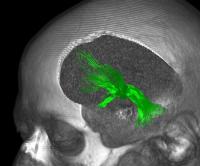Deep brain stimulation significantly reduced depressive symptoms
Deep brain stimulation using implanted pacemaker electrodes in the medial forebrain bundle reduced symptoms by more than 50% in patients with treatment-resistant major depressive disorder, new research suggests.
“Deep brain stimulation, a method widely clinically used for the treatment of tremors in Parkinson’s disease, shows more and more promise for psychiatric disorders,” study researcher Thomas E. Schlaepfer, MD, vice chair and professor of psychiatry and psychotherapy at University Hospital Bonn in Germany, told Psychiatric Annals. “[This study] demonstrated surprisingly sharp and rapid effects of stimulation to the medial forebrain bundle, a structure of the human reward system, in patients suffering from extremely refractory forms of major depression.”

Thomas E. Schlaepfer
In the small pilot study, Schlaepfer and colleagues assessed the safety and efficacy of deep brain stimulation on seven participants with a mean length of current major depressive episode of 7.6 years. At the time of the study, the mean number of antidepressant medications participants were using was four, and all participants had previously received electroconvulsive therapy and psychotherapy without response.
Besides symptom severity, general psychopathologic parameters, social functioning and tolerance also were assessed. The researchers used diffusion tensor imaging to track the stimulation’s effects on the brain.

Figure 1. The medial forebrain bundle is highlighted in green.
Source: ©University Hospital Bonn.
After the electrodes had been implanted, participants were subject to a mean stimulation current of 2.86 mA. They were observed for 12 weeks and underwent weekly psychiatric evaluations.
During the stimulation process, all participants exhibited similar signs of appetitive motivation, including orientation reaction, initialization of eye contact and engaging with the attending psychologist in conversation
By day 7, scores on the Montgomery-Åsberg Depression Rating Scale were reduced by more than 50%. At last follow-up, six patients were classified as responders. Among those, four were classified as remitters. Social functioning improved among all participants from serious to mild impairment.
Adverse events included strabismus at higher stimulation current, a small intracranial bleeding during surgery for one participant, and infection occurring at the implanted pulse generator site.
“Such sensational success both in terms of the strength of the effects, as well as the speed of the response has so far not been achieved with any other method,” Schlaepfer said in a press release.
Disclosure: Schlaepfer reports no relevant financial disclosures.

